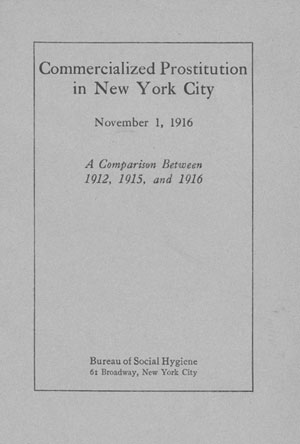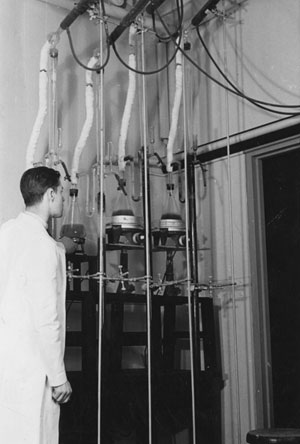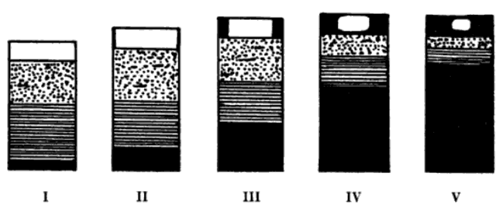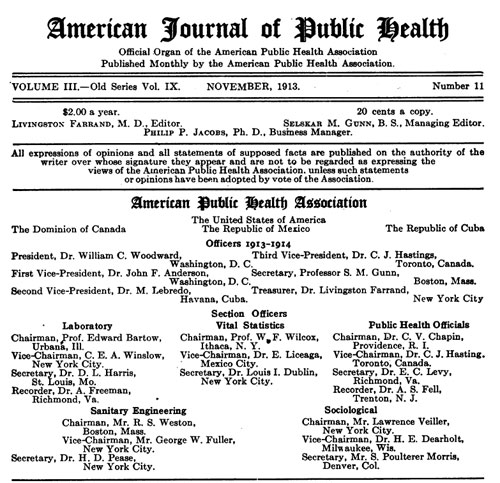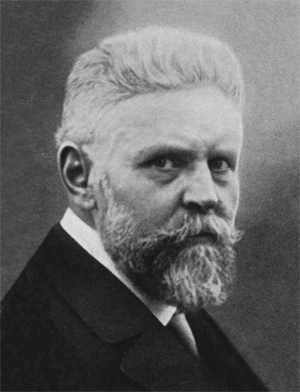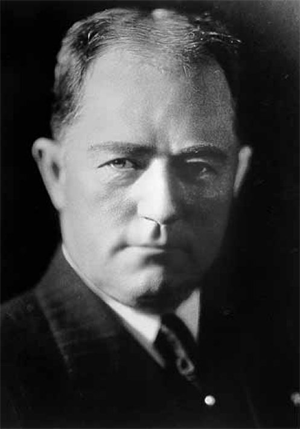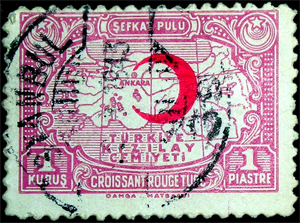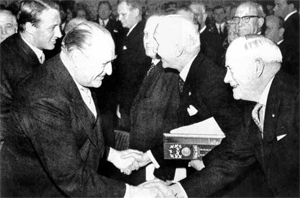by Wikipedia
Accessed: 3/4/20
American Sexual Health Association
Operates in the US
Abbreviation: ASHA
Formation: 1914
Type: NGO
Purpose: Information and treatment for sexually transmitted diseases (STDS)
Region served: United States
Website [1]
The American Sexual Health Association (ASHA) is an American non-profit organization established in 1914, that cites a mission to improve the health of individuals, families, and communities, with an emphasis on sexual health, as well as a focus on preventing sexually transmitted infections and their harmful consequences. ASHA uses tools such as education, communication, advocacy and policy analysis activities with the intent to heighten public, patient, provider, policymaker and media awareness of STI prevention, screening, diagnosis and treatment strategies.
History
ASHA was born out of the early 20th century social hygiene movement. At the beginning of the twentieth century venereal disease (VD), or what we now call sexually transmitted diseases or infections (STDs/STIs), was a prevalent concern for social health organizations. Sexuality was not an acceptable topic for polite conversation in Victorian society, and VD largely remained behind a veil of shame. At the same time, however, reports of rising incidence rates for syphilis and gonorrhoea gave cause for serious concern. For example, by one perhaps inflated but widely accepted estimate in 1901, as many as 80 percent of all men in New York City had a gonorrhoea infection at one time or another. Early efforts to eradicate "social diseases" focused on prostitution on one hand, as both a threat to the family as a source of infection, and the threat to public health on the other, with the focus on addressing the problem through both medical and educational means.
In 1913, at a conference in Buffalo, New York, several organizations dedicated to fighting prostitution and venereal disease joined together to form the American Social Hygiene Association (ASHA). The association was established to stop the venereal disease epidemic through public education on STIs and working to break down the social stigma attached to VD. In 1914, ASHA established its national headquarters in New York City. Founders and supporters included Charles Eliot, president of Harvard University; Jane Addams of Chicago's Hull House; Edward Keyes, Jr., M.D.; Dr. Thomas N. Hepburn, leader of the Connecticut social hygiene movement; Grace Dodge, philanthropist; John D. Rockefeller, Jr., initial financial contributor; and Dr. William Freeman Snow, Stanford University professor and secretary of the California State Board of Health.
Bureau of Social Hygiene
From 1911 to 1934, the Bureau of Social Hygiene (BSH) funded research and sought to influence public policy on a number of issues related to sex, crime and delinquency. Although the BSH received contributions from a number of organizations, including the Rockefeller Foundation (RF), the Bureau was largely dependent upon the patronage of John D. Rockefeller, Jr. (JDR Jr.), who created the organization to address many of his own personal concerns and interests.
Research and Reform
The idea for the BSH originated in 1910, following JDR Jr.’s participation in a grand jury investigation of white slavery in New York City. Motivated by frustration with temporary public commissions that could only recommend governmental action, JDR Jr. established a permanent and private body to deal directly with a variety of social ills, including prostitution, corruption, drug use and juvenile delinquency.
Pamphlet produced by the Bureau of Social Hygiene: "Commercialized Prostitution in New York City" 1916
The goals and projects of the BSH evolved over time. Its earliest efforts concentrated on surveying the scope of prostitution in New York City and the reform of young women involved in the trade. The BSH commissioned George Kneeland to study various aspects of prostitution in New York City and offered Katherine Bement Davis of the Bedford Hills Women’s Reformatory the resources to study the impact of prostitution on young women and the possible paths to reform. The BSH also devoted significant efforts to sex education, sponsoring the publication of materials related to sexual health and working with state departments of health to disseminate these materials among the general public.
The Root of the Problem
In 1917 [Katherine Bement] Davis was named general secretary of the BSH, and her appointment transformed the organization. She believed that prostitution could not be fully addressed without a deeper understanding of human sexuality. To promote this understanding, Davis spent years advocating for more scientific research into human sexuality. This advocacy helped to create a partnership between the BSH and the National Research Council (NRC) and to form the NRC’s Committee for Research in the Problems of Sex.
The Committee for Research in Problems of Sex was established in 1921 following a proposal by Davis and Earl F. Zinn “[t]o undertake systematic comprehensive research in sex in its individual and social manifestations, the prime purpose being to evaluate conclusions now held and to increase our body of scientifically derived data.”[1] The proposed fields of research included the psychological and physiological aspects of the “sex instinct,” abstinence, masturbation, contraception, venereal disease and sexual relationships. Importantly, these fields of research were to be explored not only from medical and biological perspectives but also from a sociological perspective.
Yale University - endocrinology continuous extractor, 1940
Yet to the dismay of both Zinn and Davis, throughout the 1920s the Committee remained a relatively conservative organization controlled primarily by men trained in the medical sciences rather than the social sciences. The Committee repeatedly funded studies that focused on topics of animal biology and sexuality while ignoring proposed studies on human sexuality. In addition to being uncomfortable with topics of human sexuality and fearing a public backlash, committee members also expressed a general distrust of the social sciences. Davis encountered significant obstacles from BSH trustees who sought to distance the BSH from its work in sex research and direct it towards topics deemed less controversial. Bowing to internal pressures, Davis retired in 1928, and with her retirement the BSH became more deeply involved in the field of criminology.
Beginning in 1931 the BSH planned its own demise by allowing all of its outstanding grants expire. By 1933 all BSH grants had concluded, and the organization effectively ceased operations, although it was not formally dissolved until 1940. Research into sex, including grants to fund the study of endocrinology and the work of Alfred Kinsey, was subsequently taken up by the RF [Rockefeller Foundation].
Notes:
[1]Outline Presented by Mr. Zinn, Earl F. Zinn, undated, Rockefeller Archive Center (RAC), Rockefeller Family Boards, RG III 2 O, Box 7, Folder 50.
-- Bureau of Social Hygiene, by The Rockefeller Foundation Digital History
Bureau of Social Hygiene
The Bureau of Social Hygiene resulted from the appointment of John D. Rockefeller, Jr. to a Special Grand Jury to investigate white slavery in New York City in 1910. In conferences taken in the course of this investigation, Mr. Rockefeller, Jr. became convinced that for a lasting improvement of conditions a permanent organization was needed. On March 22, 1911, The Committee of Three, including Mr. Rockefeller, Paul Warburg and Starr J. Murphy [counsel for the Rockefeller Foundation and personal legal adviser of John D. Rockefeller for 17 years] met. The name "Bureau of Social Hygiene" was first used in October of that year, but was not used consistently until 1913.
In 1913 the Bureau was incorporated and its purpose was stated as " ... the study, amelioration, and prevention of those social conditions, crimes, and diseases which adversely affect the well being of society, with special reference to prostitution and the evils associated therewith." The Bureau would engage in research and education, publish reports, and employ and/or cooperate with other public or private agencies to obtain these goals. The emphasis in the years from 1911 until the reorganization of 1928 was mainly on prostitution, the control of vice, and their relationships to police organization. Narcotics was also an early interest.
The General Secretary during the early years was Katharine Bement Davis. She resigned in 1928 and Lawrence B. Dunham was appointed Director. In 1929 the certificate of incorporation was amended and the emphasis on prostitution was dropped. From 1929-1934 the Bureau developed an interest in criminology. Studies and projects were still conducted in narcotics and social hygiene during this time.
The Bureau functioned through grants. It was not a foundation and had no set endowment. In the early years, financial backing came from several sources including Paul Warburg, the New York Foundation, and John D. Rockefeller, Jr. Mr. Rockefeller was always the main contributor. Grants were occasionally channeled through the Bureau from the Spelman Fund of New York and the Rockefeller Foundation. Grants were most often long range, covering periods of from three to five years. The Bureau did not interfere in the conduct of a project once the money had been granted, but it was careful in its selection of projects and kept in close touch for the duration of the grant.
The Bureau ceased making new appropriations in 1934 and by mid 1937 all the previous commitments had been brought to a close. Annual meetings were held until 1940 when the Bureau was dissolved on November 13th.
Associated With:
• American Birth Control League.
• American Social Hygiene Association.
• British Social Hygiene Council.
• Bureau of Social Hygiene (New York, N.Y.)
• Flexner, Abraham, 1866-1959.
• Fosdick, Raymond B., 1883-1972.
• Frankfurter, Felix, 1882-1965.
• Glueck, Sheldon, 1896-
• Harrison, Leonard Vance, b. 1891.
• Hoover, J. Edgar 1895-1972.
Subjects:
• Birth control
• Correctional institution
• Crime and criminals
• Criminal behavior, prediction of
• Criminal investigation--Scientific
• Criminal law
• Criminal psychology
• Criminal statistics
• Drug control
• Eugenics
-- Bureau of Social Hygiene, by Social Networks and Archival Context (SNAC)
World War I
ASHA's early worked focused on education and awareness efforts within the armed forces. ASHA worked with the US War Department during World War I when VD occurrences surged among soldiers. Their efforts included educating soldiers about venereal diseases and their transmission and attempting to eliminate prostitution, which was believed to be the primary vehicle for VD transmission among the armed forces. ASHA was successful in shutting down many of the prostitution rings that traditionally surrounded military bases. Due to its contribution to the war effort, ASHA gained national attention and succeeded in creating public awareness of VD.
Between the wars
During the 1920s, ASHA served as a central coordinator for the local or regional committees, doctors, public health officials, and social welfare agencies that were combating sexually transmitted infections. In addition, ASHA published the Journal of Social Hygiene and the Social Hygiene Bulletin, conducted studies on the prevalence of syphilis, undertook surveys on VD, published synopsis of laws concerning prostitution, and supported legislation that required a premarital exam for syphilis. The program also promoted character and sex education as a means of preventing the spread of STIs. The ASHA educational program emphasized preparation for a wholesome family life, avoiding VD, and physical as well as moral fitness.
ASHA had developed into a mature organization by the 1930s with an effective network of supporting local organizations. ASHA also was involved in cooperative projects with a variety of organizations. In a single year, ASHA collaborated with the Federal Council of Churches [the predecessor organization of the World Council of Churches] and the National Congress of Parents and Teachers to promote sex education programs and materials; provided leadership for efforts by the White House Conference on Child Health and Protection to consider the social hygiene elements of child health; conducted institutes for public health nurses under the auspices of the National Organization of Public Health Nursing; and provided data to the U.S. Bureau of Indian Affairs in preparation for Indian Health Programs.
World War II
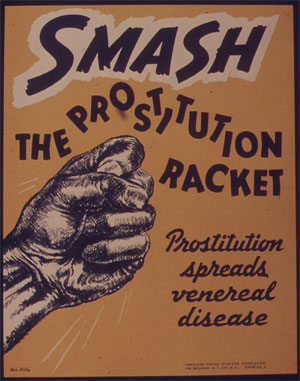
American Social Health Association World War II poster
During World War II, ASHA fulfilled a role reminiscent of its work during World War I, serving on the VD Coordinating Committee for the US military and working against prostitution. ASHA's efforts contributed to a 50% drop in VD infection rates in the military during the first years of the war. In 1944, the military began using penicillin as a cure for syphilis and by the late 1950s it was believed that syphilis was no longer a serious health threat. As a result, the Journal of Social Hygiene discontinued publication.
Journal of Social Hygiene
by American Social Hygiene Association.
Albany, N. Y. : Boyd Printing Co., inc.,
• 1914 (v.1 n.1)
• 1915 (v.1 n.2 - v.1 n.4)
• 1916 (v.2 n.1 - v.2 n.4)
• 1917 (v.3 n.1 - v.3 n.4)
• 1918 (v.4 n.1 - v.4 n.4)
• 1919 (v.5 n.1 - v.5 n.4)
• 1920 (v.6 n.1 - v.6 n.4)
• 1921 (v.7 n.1 - v.7 n.4)
• 1922 (v.VIII n.1 - v.VIII ind.)
• 1923 (v.IX n.1 - v.IX n.9)
• 1924 (v.10 n.1 - v.10 ind.)
• 1925 (v.11 n.1 - v.11 ind.)
• 1926 (v.12 n.1 - v.12 n.9)
• 1927 (v.13 n.1 - v.13 n.9)
• 1928 (v.14 n.1 - v.14 n.9)
• 1929 (v.15 n.1 - v.15 n.9)
• 1930 (v.16 n.1 - v.16 n.9)
• 1931 (v.17 n.1 - v.17 n.9)
• 1932 (v.18 n.1 - v.18 n.9)
• 1933 (v.19 n.1 - v.19 n.9)
• 1934 (v.20 n.1 - v.20 n.9)
• 1935 (v.21 n.1 - v.21 n.7-9)
• 1936 (v.22 n.1 - v.22 n.9)
• 1937 (v.23 n.1 - v.23 n.9)
• 1938 (v.24 n.1 - v.24 n.9)
• 1939 (v.25 n.1 - v.25 n.9)
• 1940 (v.26 n.1 - v.26 n.9)
• 1941 (v.27 n.1 - v.27 n.9)
• 1942 (v.28 n.1 - v.28 n.9)
• 1943 (v.29 n.1 - v.29 n.9)
• 1944 (v.30 n.1 - v.30 n.9)
• 1945 (v.31 n.1 - v.31 n.9)
• 1946 (v.32 n.1 - v.32 n.9)
• 1947 (v.33 n.1 - v.33 n.9)
• 1948 (v.34 n.1 - v.34 n.9)
• 1949 (v.35 n.1 - v.35 n.9)
• 1950 (v.36 n.1 - v.36 ind.)
• 1951 (v.37 n.1 - v.37 n.9)
• 1952 (v.38 n.1 - v.38 n.9)
• 1953 (v.39 n.1 - v.39 n.9)
• 1954 (v.40 n.1 - v.40 n.9)
Kinsey era
The release of the Kinsey reports on sexual behavior in 1948 and 1954 created national controversy. ASHA played a prominent role in the debate, organizing a national conference to bring together leading authorities in the fields of psychology, statistics, education, medicine, law, religion, anthropology and sociology to exchange views as to the significance of Kinsey's new information. The goal was to look at the information as scientific data instead of pornography. As Walter Clark, ASHA president from 1937 to 1951, commented, "The truth never harms . . . And it seems reasonable to hope that when today's older generation, conditioned against frankness in sex matters, passes away and today's youth takes over tomorrow's world, the truth about sex shall indeed make them free—free of the diseases, the exploitations, the ignorance and superstitions which for ages have burdened and blighted society."
Also in the 1950s, ASHA began to distribute a comprehensive annual questionnaire to health officers across the country. The responses, tabulated by ASHA and analyzed by the Centers for Disease Control and Prevention, were published annually as Today's VD Control Problem, continuing under ASHA auspices until 1975. Today's VD Control Problem provided the statistical basis for testimony before Congress, as ASHA returned year after year to urge adequate federal appropriations for STD control.
The 1960s and 1970s
As ASHA began to recognize that the STD issue connected with other issues, it reflected its broader approach in a name change, moving from American Social Hygiene Association to American Social Health Association in 1960. Among the issues of concern identified by ASHA was the link between STDs and drug use. In 1961 ASHA launched a new program that was the first to focus on the prevention of narcotic addiction and the treatment and rehabilitation of drug addicts. The agency evaluated existing programs, issued position papers and informational booklets, maintained a clearinghouse, and sponsored four community-based pilot projects.
By the 1970s, though, additional novel problems led to soaring STD rates, including the sexual revolution, more international travel, gay liberation, birth control for women, and increasing drug use. Scientists were also recognizing more sexually transmitted pathogens, and viral STDs were making an appearance as well, from herpes simplex virus (HSV) to human papilloma virus (HPV). ASHA's public outreach efforts in this era included the creation of the Herpes Resource Center in 1979, the first program in the U.S. for people living with a viral STD. ASHA also established the National VD Hotline, where trained volunteers offers scientifically accurate information and support. ASHA also launched its first modern public awareness campaign, VD is For Everybody.[1] Working with the National Advertising Council, ASHA called attention to the alarming increase in the number of STDs by means of radio, television, and print public service announcements.
During the 1980s, ASHA continued to educate the public about sexually transmitted infections, primarily by means of telephone information and referral hot-lines, such as the National STD Hotline and the National AIDS Hotline. ASHA established the latter hotline in 1986, at that time the largest health-related hotline in the world. By the 1990s, the hotline was answering more than 1.5 million calls per year. The association also continued to advocate for public policies to combat STDS and increased funding for research. The identification of the AIDS virus added a new area of concern to the association's fight against sexually transmitted infections.
ASHA Today
ASHA continues its mission to improve the health of improving the health of individuals, families and communities with a focus on preventing sexually transmitted diseases and their harmful consequences, and has broadened its efforts into the field of sexual health. Its current programs include:
STI Resource Center, that provides information, materials and referrals to the public who have questions or concerns about sexually transmitted infections. Through its telephone hotline and online message boards, the Center answers questions on such topics as transmission, risk reduction, prevention, testing, and treatment and partner communication.
Herpes Resource Center, founded in 1979, continues to provide information and support through its multiple web pages, message board and publications. The center also offers The Helper, a quarterly journal that discusses the latest in herpes information, research, treatment, testing and patient-advocacy.
HPV and Cervical Cancer Prevention Resource Center, established in 1991, offers information and referrals about the Human Papillomavirus to patients, health care providers, and policy makers. The HPV Resource Center focuses on issues including HPV vaccines, partner communication and cervical cancer screening. The Center also offers a bimonthly electronic journal, HPV News, that covers the latest in HPV research, treatment and testing options, and policy issues.
ASHA's Research division conducts numerous research projects among local, regional, and national constituents focusing on a variety of populations and an assortment of health topics including sexually transmitted infections. ASHA's Washington staff works to educate members of Congress and other important voices in health policy about the urgency of research and frontline programs in the STI field.
Advocacy: ASHA has maintained a policy office in Washington, DC and has worked in partnership with other organizations in the area of sexual and reproductive health to advocate for proper attention and funding to STD research and programs.
National Cervical Cancer Coalition: NCCC became an ASHA program in the fall of 2011. Founded as a grass-roots organization in 1996, NCCC supports cervical cancer patients/survivors, families, and caregivers. NCCC has chapters[2] across the U.S.
ASHA milestones
• 1914 American Social Hygiene Association was founded
• 1920s John D. Rockefeller, Jr. commits funds to support ASHA's mission
• 1927 ASHA establishes the Valentine's Day Committee to promote sexual responsibility
• 1931 Trains field and send them to uncover commercial houses of prostitution, ASHA's leader, Thomas Parran, Jr., MD, is appointed Surgeon General by FDR
• 1934 CBS cancels a radio address by Dr. Parran, New York Commissioner of Health, because the script includes the word "syphilis"
• 1937 ASHA established First National Social Hygiene Day
• 1938 Eleanor Roosevelt attends ASHA's annual luncheon in honor of the passage of Venereal Disease Control Act
• 1943 Perception shifts from moral to medical interventions to solve the VD problem
• 1945 Joe Louis joins ASHA for a major public awareness campaign
• 1954 ASHA begins to monitor rates of venereal disease by collecting data that was then analyzed by the Center for Disease Control and Prevention "Today's VD Control Problem" published by ASHA until 1970. ASHA testifies before Congress, as it continues to do today, to urge adequate federal appropriations for VD control.
• 1959 ASHA changes its name to the American Social Health Association
• 1970s Dramatic rise in sexually transmitted infection rates because of international travel, the sexual revolution, gay liberation and increasing drug use. Scientists recognizing more and more sexually transmitted pathogens. Genital herpes, human Papillomavirus (HPV), hepatitis B identified.
• 1979 ASHA creates the National Herpes Resource Center, which includes the National Herpes Hotline
• 1986 ASHA opens the National AIDS Hotline, the largest health-related hotline in the world
• 1999 ASHA opens the National HPV and Cervical Cancer Prevention Resource Center with hotline
• 2011 ASHA merges with the National Cervical Cancer Coalition (NCCC) in October. NCCC becomes a program of ASHA and expands ASHA's reach to include cervical cancer survivors.
• 2012 ASHA changes its name to the American Sexual Health Association
See also
• Maurice Bigelow
• Reproductive health
• Social hygiene movement
References
1. https://www.youtube.com/user/ashastd#p/u/2/SN9_J3_9wPc
2. "Archived copy". Archived from the original on 2014-08-04. Retrieved 2014-08-01.
External links
• Official website
• Finding aid for the American Social Health Association records at the Social Welfare History Archives, University of Minnesota Libraries.

